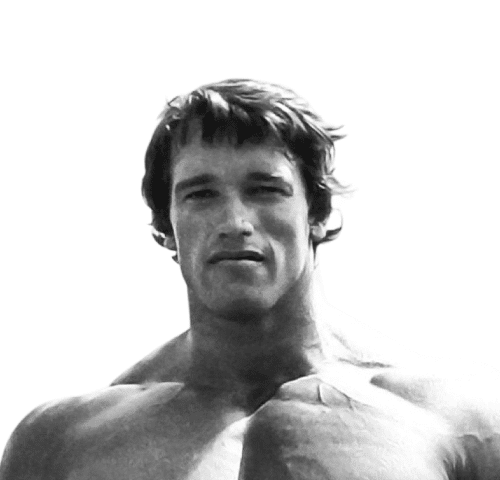Hugh Jackman Workout Routine in 2025 – Independent Look at His Rigorous Exercise Schedule

How He Trains to Stay Strong, Lean, and Superhero Ready
Hugh Jackman is known for his incredible physique, especially in his role as Wolverine. His training combines heavy lifting, functional exercises, and consistent discipline to maintain his muscular and lean build. The Hugh Jackman workout routine offers a clear look at how he prepares his body for demanding movie roles and continues to stay in top shape.
- Last Updated: November 12, 2025
-
-
Hugh Jackman Workout Routine Overview
Hugh Jackman workout routine shows the power of consistency and discipline. Known for his intense preparation to play Wolverine, he approaches fitness with a no-excuses attitude. Even in his 50s, he maintains a strong, muscular physique through heavy lifting, structured programming, and a well-balanced diet that supports his demanding training schedule.
- Commitment to training: Before returning as Wolverine in Deadpool 3, Jackman treated his preparation like a full-time job. He set aside six months dedicated entirely to training, spending his days focused on workouts and time with family.
- Heavy lifting achievements: His strength levels are remarkable. Jackman became part of the “1000-pound club” after completing a 355-pound squat, a 235-pound bench press, and a 410-pound deadlift — all in one morning.
- Belief in hard work: He has often shared that progress doesn’t come overnight. His philosophy is to stay consistent, trust the process, and put in the effort every day.
- Combination of training styles: Jackman mixes classic weightlifting with structured strength programming, allowing him to keep building muscle while avoiding burnout or injury.
- High-protein nutrition: During his muscle-building phases, he increases his protein intake dramatically, often joking about how much chicken he eats during this period.
- Staying strong with age: At 56, Jackman still trains hard with compound movements like trap bar deadlifts, proving that smart training can help maintain strength and performance well into later years.
His fitness plan is built on patience, structure, and determination. His commitment to lifting, nutrition, and consistent effort serves as proof that long-term results come from dedication, not shortcuts.
-
Workout Philosophy
Hugh Jackman approaches fitness with a mindset built on structure and intention. His workouts aren’t about spending countless hours in the gym but about making each session count. He values intensity, consistency, and guidance to ensure every minute contributes to measurable progress.
- Focused sessions: Jackman keeps his workouts under an hour but ensures they’re packed with effort. Each session is designed to push his limits without unnecessary volume or wasted time.
- Professional guidance: He prefers to train under the supervision of a professional coach who monitors his form, plans his routines, and manages his nutrition to match his training goals.
- Science-based adjustments: In preparation for major roles, his trainer fine-tunes his diet and workout timing to help him peak at the exact moment needed for filming.
- Commitment to fundamentals: His workouts rely heavily on classic compound lifts and foundational movements, proving that consistency with the basics can lead to lasting strength and definition.
This balanced approach shows that success in fitness doesn’t come from overtraining but from purposeful effort. The Hugh Jackman workout philosophy highlights the value of intensity, discipline, and guided structure in building and maintaining a powerful physique.
When lifting, I’m always with a trainer because the thing that makes a difference is that last 20%… he very scientifically looks after my food as well. When I’m going for a ‘shirt off’ shot, everything changes the month before, and I’m timed down to the day,
-
Progressive Overload
Hugh Jackman’s impressive strength and muscular build are the result of a steady, structured approach. His trainer, David Kingsbury, designed a program centered on progressive overload, which focuses on gradually increasing resistance and intensity to keep the body improving over time.
- Core lifts as the foundation: Jackman’s workouts focused on the big three — squat, bench press, and deadlift. He began with lighter weights and higher reps, then gradually added more weight while lowering reps to build power and endurance.
- Low to high rep training: His sessions started with heavy sets in the 1–5 rep range to develop strength and later moved into higher-rep sets for muscle growth. This shift allowed him to target both strength and size efficiently.
- Guided progression: Under his trainer’s supervision, Jackman’s plan followed a methodical rhythm. Each phase was carefully adjusted to push progress without overtraining, ensuring recovery remained part of the process.
- Structured cycles: His training ran in four-week cycles, increasing intensity for three weeks followed by a lighter “deload” week. After each cycle, his weights were bumped up by around 5–10 percent to ensure ongoing improvement.
- Smart balance: Alternating heavy and lighter phases helped him gain strength while staying injury-free and consistent across his training blocks.
This progressive overload approach gave Hugh Jackman a sustainable path to growth, allowing him to build both power and muscle while staying strong and conditioned for demanding film roles.
-
Compound Exercises
Hugh Jackman’s fitness approach is rooted in simplicity and effort. He believes in sticking to the basics that have stood the test of time. Instead of constantly changing his workouts, he focuses on proven exercises that challenge his entire body and deliver visible, lasting results.
- Focus on the basics: Jackman’s training revolves around fundamental compound lifts such as squats, deadlifts, and presses. These core movements target several muscle groups at once, helping him build overall strength while improving coordination and control. His trainers have emphasized that his foundation is built on these classic bodybuilding moves.
- Old-school lifting style: He prefers a traditional training style that prioritizes effort over variety. His routine often includes heavy squats, rows, and chin-ups, which engage large muscle areas and promote muscle density and endurance. Jackman has mentioned that sticking to these timeless exercises keeps him grounded and consistently progressing.
- Building strength and balance: Compound lifts play a big role in developing balance between different muscle groups. By focusing on multi-joint exercises, Jackman ensures that his body grows stronger and more functional, not just bigger. This balance also reduces injury risk and supports longevity in his training.
- Patience and discipline: Jackman believes that meaningful results require patience. He has said that building real strength can’t be rushed, which is why he allows himself several months to train before filming physically demanding roles. His consistency and long-term mindset are key reasons he continues to perform at a high level, even after decades of training.
This commitment to compound exercises shows that Hugh Jackman values progress that’s earned through effort and time. His steady focus on mastering the basics continues to keep him strong, lean, and ready for any physical challenge his roles demand.
I’ve learned you can’t rush it. It takes time.
-
Early Morning Workout Routine
Hugh Jackman’s training schedule often starts before sunrise. Due to his demanding film commitments, he prefers to get his workouts done early in the day, ensuring that nothing interferes with his consistency. His early morning sessions also set a focused tone for the rest of his day.
- Starting before dawn: Jackman frequently trains as early as 4 A.M., especially when filming requires him to be on set by 6 A.M. This discipline allows him to stay on track with his training no matter how packed his schedule gets.
- Morning intensity: His longtime trainer, Mike Ryan, has said that Jackman trains in the morning to get the most out of his workouts before fatigue or distractions set in. Morning sessions help him maintain high energy and intensity levels.
- Mental clarity and focus: Jackman finds that training early gives him a clear head and sets him up mentally for the rest of the day. It’s his way of creating momentum before long hours on set.
- Adjusting for recovery: On busy production days, he sometimes manages only five to six hours of sleep but still trains first thing in the morning. To balance this, he makes time for short naps later in the day to help his body recover.
Jackman’s early morning workout routine shows his commitment to consistency and structure. Even with limited rest, he prioritizes discipline and planning, proving that success often comes from simply showing up and putting in the work before the day begins.
-
Workout Fundamentals
Hugh Jackman’s training approach is grounded in discipline and simplicity. He doesn’t chase the latest fitness trends or flashy techniques; instead, he focuses on mastering the basics that consistently deliver results. His workouts reflect a straightforward philosophy centered around effort, proper form, and long-term progress.
- Commitment to the basics: Jackman believes real strength comes from sticking to fundamental movements. His philosophy is simple — lift heavy, stay consistent, and focus on improving over time instead of relying on shortcuts or gimmicks.
- Old-school mentality: He often jokes that the foundation of fitness is just to “pick heavy stuff up and move it.” This mindset highlights how he prioritizes effort and repetition over fancy equipment or new workout fads.
- Pushing through challenges: Although he admits leg workouts aren’t his favorite, he never skips them. Exercises like squats and deadlifts remain central to his plan because they build overall balance, stability, and power.
- Strength and consistency: His workout structure combines intensity, guidance, and progressive strength work to achieve steady improvement. This blend keeps him strong, functional, and camera-ready when it’s time to return as Wolverine.
His focus on hard work and fundamentals shows that lasting progress doesn’t depend on shortcuts. His consistent dedication to the essentials continues to set the standard for disciplined, effective training.
-
Weekly Workout Routine
Hugh Jackman follows a structured workout plan that targets specific muscle groups throughout the week. His training is organized to balance intensity and recovery, allowing him to build strength while staying injury-free. Depending on his movie schedule, he typically trains four to five days per week, adjusting the routine to match his fitness goals and role requirements.
- Training split: Jackman’s workouts are divided by muscle group to ensure each area gets proper focus. A common setup includes four days of lifting with rest days in between. For example, Monday focuses on chest and triceps, Tuesday on legs, Thursday on back and biceps, and Friday on shoulders and abs. This balanced approach allows his body to recover while maintaining consistent progress.
- Five-day variation: During more demanding training phases, such as preparing for Wolverine, Jackman switches to a five-day split. This plan lets him target some muscle groups twice per week for added development.
- Day 1: Chest and shoulders, including barbell bench presses and overhead presses.
- Day 2: Legs and abs, combining back squats, leg presses, calf raises, and core exercises.
- Day 3: Back and biceps, featuring pull-ups, rows, and various curls.
- Day 4: Chest and arms, including incline presses, flyes, dips, and tricep pushdowns.
- Day 5: Legs and core, with exercises like deadlifts, Romanian deadlifts, and ab-focused training.(This example gives a general idea of his weekly structure, though Jackman and his trainers frequently adjust the split depending on his movie preparation and how his body responds to training.)
- Training volume: Jackman’s program usually includes five high-effort sessions each week. Some weeks, he adds light cardio or recovery work to keep his body balanced and ready for heavy lifting.
Hugh Jackman’s weekly workout routine shows his commitment to structure and consistency. Each phase of his training is designed to push his limits while ensuring enough recovery time, allowing him to stay strong, defined, and film-ready throughout the year.
-
Daily Workout Routine
Hugh Jackman’s daily training schedule is structured and demanding. Each session is planned to target specific muscle groups while keeping the overall workout short, focused, and intense. His consistent approach ensures steady progress and helps him stay in top shape throughout long filming periods.
- Cardio warm-up: Every workout begins with at least 10 minutes of light cardio to increase blood flow and prepare his body for lifting. This could include a treadmill jog, rowing, or a few minutes on the bike. It helps activate the muscles and reduce the risk of injury before heavier exercises.
- Weight training session: After warming up, Jackman moves into a 60-minute strength session focused on one or two major muscle groups for the day. His workouts include compound lifts such as squats, deadlifts, and bench presses, followed by isolation exercises to complete the session.
- Finishing with conditioning: To enhance stamina and fat loss, he often ends his session with 20 minutes of cardio such as running, swimming, or rowing. These short bursts of conditioning help keep his endurance high without adding too much training volume.
- Two-a-day workouts: During intense preparation phases for roles like Wolverine and Deadpool, Jackman sometimes adds a second session later in the day. The morning workout focuses on heavy, low-rep lifts like squats or deadlifts, while the afternoon targets moderate-weight, high-rep training to build muscle size.
- Leg day focus: On leg days, he pushes through demanding exercises like back squats, leg presses, lunges, and Romanian deadlifts. Despite admitting that leg training isn’t his favorite, he continues to prioritize it for overall strength and balance.
The mix of cardio, heavy lifting, and occasional double sessions in his workout routine highlights a balanced approach to strength, endurance, and physique maintenance that keeps him ready for the physical demands of his roles.
-
Fasted Cardio
Hugh Jackman’s dedication to training often means hitting the gym before sunrise. Since he prefers morning workouts, many of his sessions are done in a fasted state, which helps him stay lean while maintaining muscle mass for his roles. His approach reflects a balance between discipline, smart supplementation, and recovery.
- Morning sessions without breakfast: Jackman frequently trains before eating, performing his workouts on an empty stomach. To protect muscle tissue during these early workouts, he uses BCAAs (branched-chain amino acids) as a supplement to support energy and muscle preservation.
- Limited sleep and recovery habits: During demanding filming schedules, he sometimes gets only around five hours of sleep before training. On such days, he compensates with short naps later or ensures extra recovery time when possible to avoid fatigue buildup.
- Focus on hydration and flexibility: Staying hydrated and stretching throughout the day are key parts of his recovery. Given his background in stage performances that involve singing and dancing, he also values maintaining flexibility and overall mobility.
- Post-workout meal: After finishing his fasted workout, Jackman eats a hearty meal to replenish energy and rebuild muscle. This refueling stage is essential to sustain his high activity levels and continuous training schedule.
His use of fasted cardio demonstrates his remarkable consistency and discipline. Even with a packed schedule, he manages to train almost every weekday, combining early-morning effort with smart nutrition and recovery practices to maintain his Wolverine-level physique.
-
Key Exercises
The Hugh Jackman workout plan is built around a few powerful lifts that form the foundation of his training. Instead of relying on fancy movements or machines, his workouts focus on mastering core compound exercises that engage multiple muscle groups at once.
- Barbell bench press: This lift helps develop upper body strength, particularly the chest, shoulders, and triceps. It’s a staple in Jackman’s training routine and plays a key role in creating his broad, muscular frame.
- Back squat: Known for building overall lower-body strength, the squat targets the quads, hamstrings, and glutes. It’s also one of the best exercises for improving stability and functional power.
- Deadlift: This full-body movement strengthens the posterior chain, engaging the back, legs, and grip. It’s one of Jackman’s main lifts for developing raw strength and muscle density.
- Weighted pull-up: To balance all the pressing work, Jackman includes heavy pull-ups. This exercise builds width and definition in the back and improves pulling power for other lifts.
Each of these core exercises is performed using a progressive overload approach, gradually increasing weight while lowering reps. This method allows Jackman to keep making steady gains in strength and muscle size while supporting the rest of his accessory work. His focus on these basics highlights that consistency and effort in fundamental movements can produce impressive results.
-
Supplementary Exercises
Beyond the main lifts, Hugh Jackman includes a range of supporting movements to strengthen smaller muscle groups, improve balance, and enhance overall performance. These supplementary exercises ensure every part of his body is trained effectively without neglecting recovery or form.
- Chest and shoulder work: Jackman builds upper-body strength with dumbbell shoulder presses, behind-the-neck presses, and variations like cable or dumbbell flyes. He finishes with push-ups or dips for higher-rep burnout sets to increase endurance and muscle definition.
- Leg and core training: His leg workouts include front squats, leg presses, and calf raises to build lower-body power, paired with ab-wheel rollouts and sit-ups to strengthen the core and maintain stability.
- Back and arm development: To add width and thickness to his back, Jackman performs dumbbell rows, lat pulldowns, and bodyweight rows. His arm training mixes incline curls, Zottman curls, and cross-body curls for biceps, along with triceps pushdowns and close-grip bench presses for balanced strength.
- Supersets and circuits: Occasionally, he combines movements such as dumbbell presses with hex presses or pull-ups with back extensions. This helps increase heart rate, burn fat, and improve conditioning without extending workout time.
Jackman’s supplementary exercises reflect his old-school preference for free weights and full control. His simple yet challenging approach keeps him lean, muscular, and ready to perform at his best on set.
-
Supplements
To sustain his intense workouts and demanding film roles, Hugh Jackman followed a simple supplement plan. Each product served a clear purpose — boosting energy, supporting recovery, and maintaining lean muscle without overcomplicating his regimen.
- Creatine: Jackman used creatine during bulking phases to improve strength and muscle size. His trainer adjusted the dosage through Animal Pump, ensuring he gained muscle efficiently while avoiding excess water retention during cutting phases.
- Pre-workout formula: A pre-workout blend like Animal Pump helped Jackman increase focus and endurance during heavy training. It also provided caffeine and other ingredients that supported better performance through longer sessions.
- BCAAs (Branched-Chain Amino Acids): Since he often trained in a fasted state, he took 5–10 grams of BCAAs both before and after his workouts. This helped prevent muscle breakdown, preserve lean muscle, and maintain energy during fat-burning periods.
- L-Carnitine: During cutting phases, Jackman added L-Carnitine to help his body convert stored fat into energy. This supported endurance and helped reduce body fat while keeping muscle definition.
- Protein supplements: To meet his high protein targets of 200–300 grams per day, Jackman relied on protein shakes and smoothies between meals. Whey isolate powders were key for muscle recovery and growth.
- Additional support: His routine likely included basic health staples such as multivitamins and omega-3 fish oil to promote joint health and overall well-being.
Jackman’s supplement routine was straightforward and goal-oriented. His trainer focused on proven essentials like creatine, amino acids, and protein powders, ensuring that supplements enhanced his natural training and diet without replacing them.
-
Workout Diet
Hugh Jackman’s incredible physique isn’t just built in the gym, his results come just as much from the kitchen. His diet has evolved depending on his roles but always centers on structured eating, clean foods, and high protein intake to support strength and muscle definition.
- Intermittent fasting: During his Wolverine training, Jackman followed a 16:8 fasting schedule, eating all his meals within an 8-hour window. He typically skipped breakfast, trained early, and had his first meal around noon, finishing eating by evening. This routine helped him stay lean while consuming enough calories to maintain muscle.
- Calorie intake: While bulking for roles, his calorie intake went as high as 5,000–6,000 calories per day. These weren’t empty calories, his meals were filled with lean proteins like chicken, tilapia, and beans, along with vegetables such as green beans and spinach.
- Protein-heavy meals: Chicken, fish, and steak formed the base of his diet. During one bulking phase, he reportedly ate over 2,000 calories of Black Sea Bass, two chicken burgers (about 2,000 calories), and two grass-fed sirloin steaks (around 2,200 calories).
- Balanced additions: To complement the protein, he added healthy carbs like oatmeal, brown rice, and sweet potatoes, as well as fibrous greens such as broccoli and spinach. Fats came from sources like avocado and grass-fed beef, both rich in nutrients and omega-3s.
- Carb cycling: His trainer, David Kingsbury, introduced carb cycling to control fat gain. On training days, Jackman consumed more carbs, especially before 3 PM, to support energy and recovery. On rest days, carbs were reduced while proteins and fats stayed consistent.
- Clean cheat meals: Although strict, Jackman occasionally allowed himself a big cheat meal — once sharing that he finished five In-N-Out burgers in one sitting after months of clean eating.
- Bulking and cutting phases: His diet alternated between high-calorie bulking to build muscle and low-calorie cutting to reduce fat. During bulks, he added light cardio to manage fat gain, while cutting involved heavier cardio and reduced carbs for a sharper look.
- Consistency and structure: Even during maintenance periods, he continued intermittent fasting, eating between 10 AM or noon and 6–8 PM. He’d drink only black coffee or BCAAs while fasting, keeping the same discipline off-camera as during film prep.
Jackman’s workout diet is a perfect mix of structure, dedication, and clean eating. His high-protein, moderate-carb, and healthy-fat approach supports intense training while maintaining definition, showing how a disciplined diet can match even the toughest workouts.
-
Recovery
Even with his intense workout schedule, Hugh Jackman knows that progress doesn’t happen without proper recovery. His approach focuses on rest, mobility, and flexibility to help his body repair after long training sessions and filming days.
- Rest and naps: When sleep was limited during filming, Jackman made it a priority to nap whenever possible. This allowed his body to recover and maintain energy for demanding workouts.
- Yoga and meditation: Jackman has mentioned using yoga and meditation to stay flexible and balanced, especially after heavy lifting sessions. These practices also helped him manage stress and improve focus.
- Stretching and massage: Foam rolling, stretching, and massage were key parts of his recovery to prevent injury and reduce soreness, especially as his training intensity increased with age.
- Warm-up and cool-down: His trainer insisted on never skipping a warm-up or cool-down. Each session began with a 10-minute cardio warm-up and ended with a 20-minute cardio cooldown or stretching to flush out lactic acid and aid recovery.
- Deload weeks: Every fourth week, Jackman reduced workout intensity through deloading. This helped his muscles and joints recover fully before returning to heavy lifting.
Jackman’s commitment to recovery matches his discipline in training. Through consistent rest, stretching, and mobility work, he keeps his body strong and injury-free, ensuring he can continue performing at his best even after years of demanding physical roles.
-
-
References
Photo Credit: Hugh Jackman at the Odeon Leicester Square premiere of Noah on March 31, 2014. Photographed by Christopher William Adach from London, UK, and licensed under Creative Commons Attribution-Share Alike 2.0.
Hugh Jackman Deadlifts 410 Lbs
Hugh Jackman Wolverine Workout Routine Revealed
Hugh Jackman Shows Off Jacked Physique
Hugh Jackman’s Brutal ‘Deadpool & Wolverine’ Diet and Workout Plan





